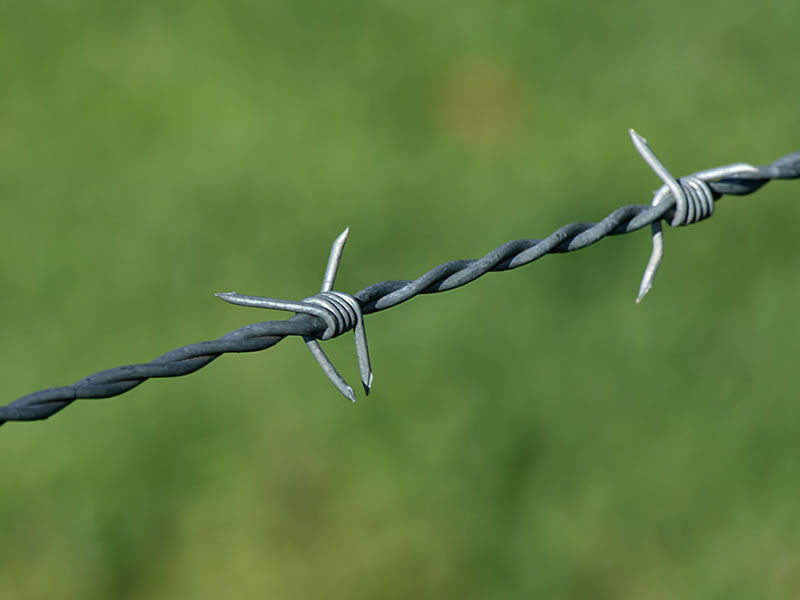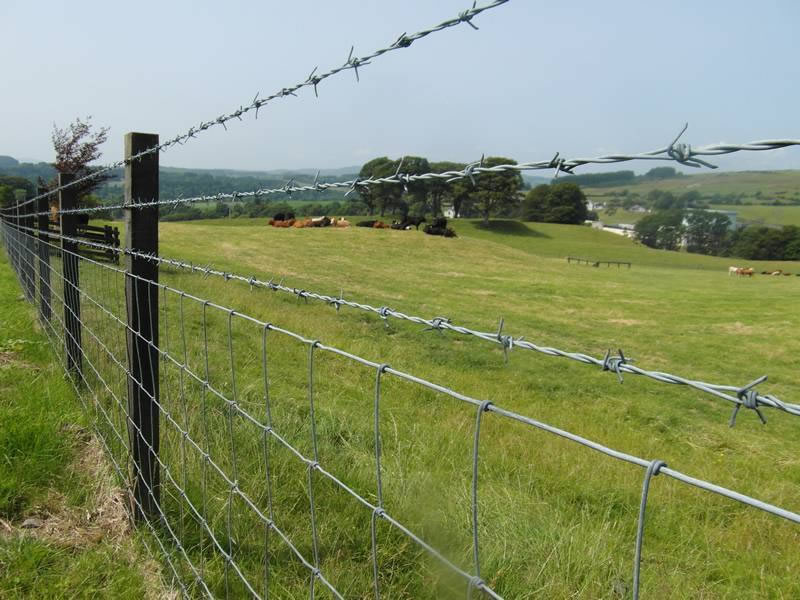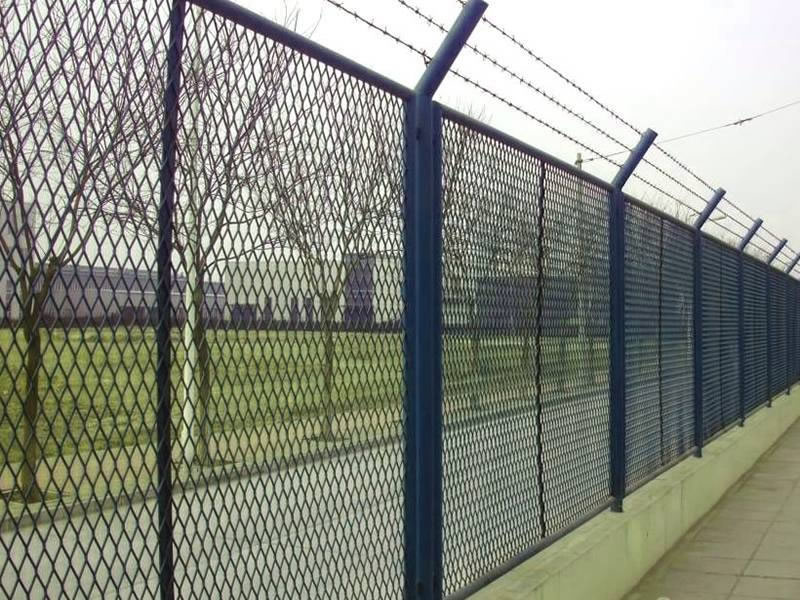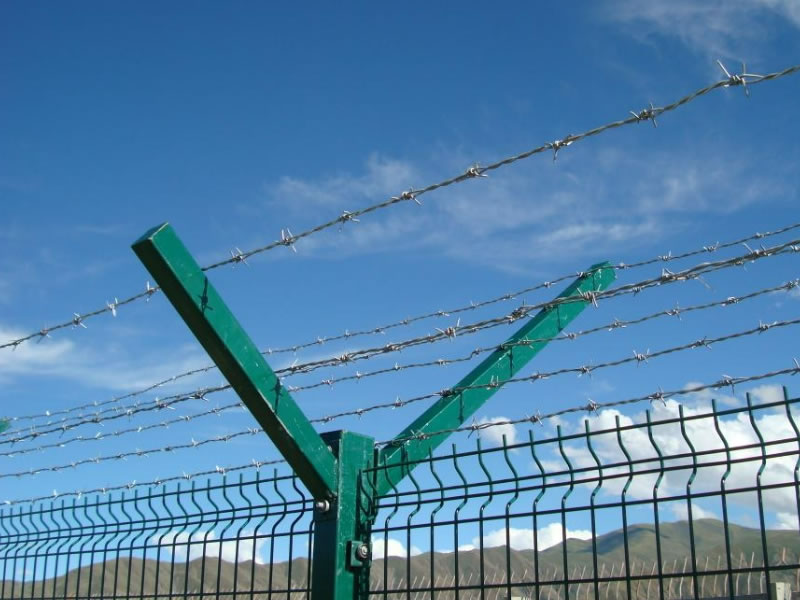Material: Constructed from premium low-carbon steel wire, this material choice ensures the barbed wire possesses both high strength and long-lasting durability. The low carbon content enhances the wire’s malleability, making it resistant to breakage under tension while maintaining its defensive capabilities.
Wire Diameter: The diameter of the wire used in barbed wire construction typically falls between 1.6 mm and 2.8 mm. This range strikes an optimal balance, offering enough flexibility for easy installation and manipulation while providing sufficient strength to withstand external pressures and potential breaches.
Barb Spacing: Barb spacing, or the interval between each barb, is variable, with common configurations at 10 cm, 12 cm, and 15 cm. This adaptability allows for customization based on the level of security required; closer spacing provides a higher deterrent effect by making penetration more difficult, while wider spacing is used for general boundary marking where a visual deterrent is sufficient.
Roll Length: Barbed wire is typically packaged and sold in rolls, facilitating transport and installation. Standard roll lengths range from 50 meters to 200 meters, accommodating a wide variety of project sizes, from small repairs to extensive perimeter enclosures, thereby ensuring efficiency and minimizing waste.
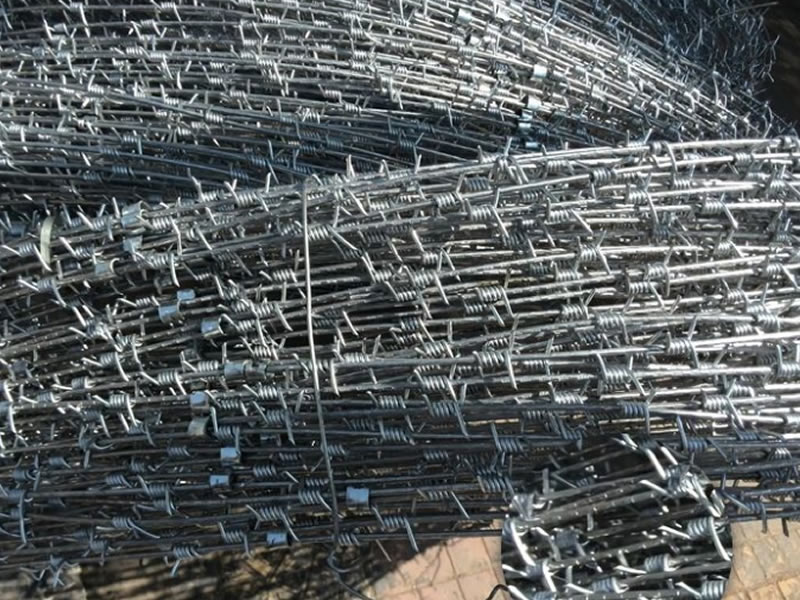
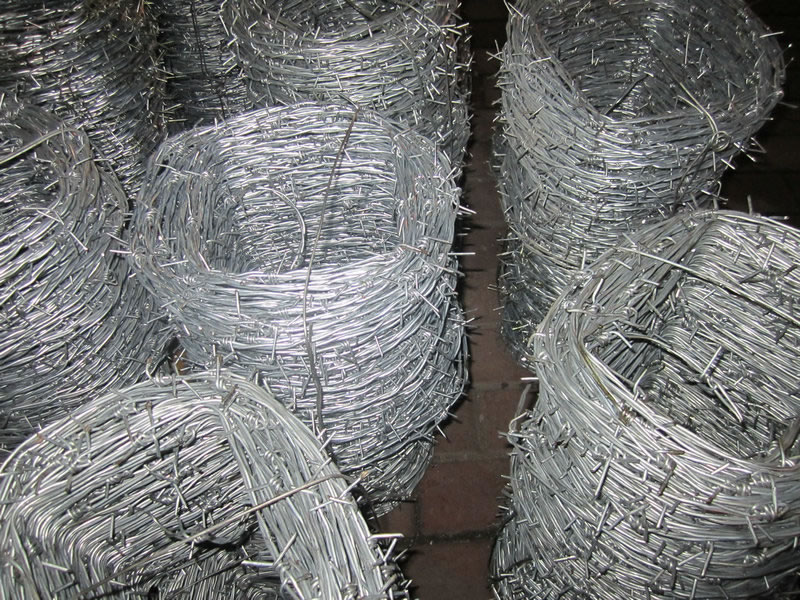
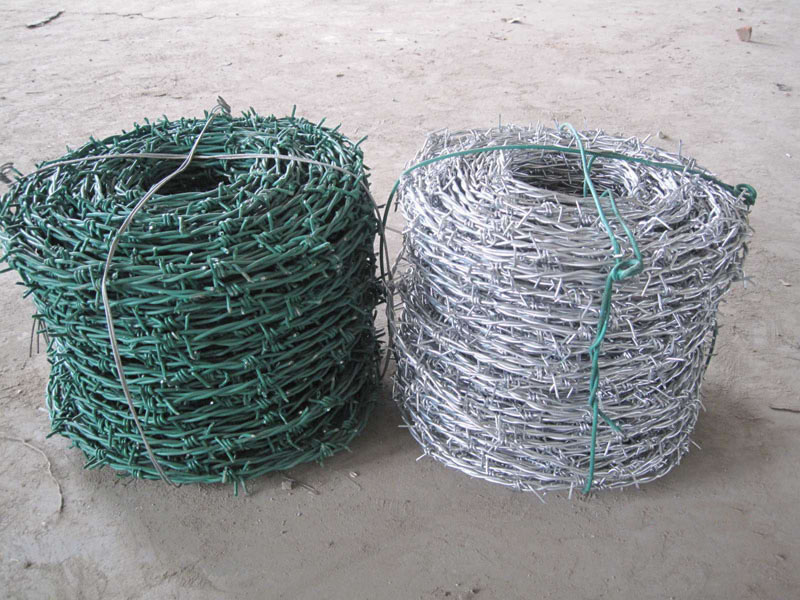
Color: Available in a variety of colors, including but not limited to blue, green, and yellow. The addition of color serves multiple purposes: it increases visibility, aiding in safety and deterrence, and allows for aesthetic integration into the surrounding environment or adherence to specific design standards.
Surface Treatments: The wire undergoes various surface treatment processes, such as electro-galvanization, hot-dip galvanization, and PVC coating. These treatments significantly enhance the wire’s resistance to corrosion and wear, extending its service life. Additionally, these coatings can introduce color to the wire, further increasing visibility and offering an additional layer of customization.
Twisting Patterns: Barbed wire is available in several twisting patterns, including forward twist, reverse twist, and double twist. Each pattern offers distinct advantages:
- The forward twist pattern is characterized by its simplicity and flexibility, making it easy to install and adjust.
- The reverse twist provides increased strength and durability, making it suitable for areas requiring enhanced security measures.
- The double twist combines the benefits of both forward and reverse twists, offering superior strength and resilience, ideal for high-security applications where maximum protection is paramount.
These diverse configurations allow for tailored security solutions, enabling effective perimeter defense across a range of settings.
Assortments Available
- Single Twisted Barbed Wire: A simple, effective barrier with a single wire strand and regular barbs, ideal for easy installation and moderate security needs in residential and agricultural settings.
- Double Twisted Barbed Wire: Features two intertwined strands with barbs for enhanced strength and durability, suitable for high-security areas like military bases and industrial sites.
- Traditional Twisted Barbed Wire: Combines the durability and effectiveness of barbed wire in securing boundaries and deterring trespassers, adaptable for a broad range of applications from property protection to livestock management.
Each variant caters to specific security requirements, from the straightforward single twisted wire to the robust double twisted wire, and the versatile traditional design.
